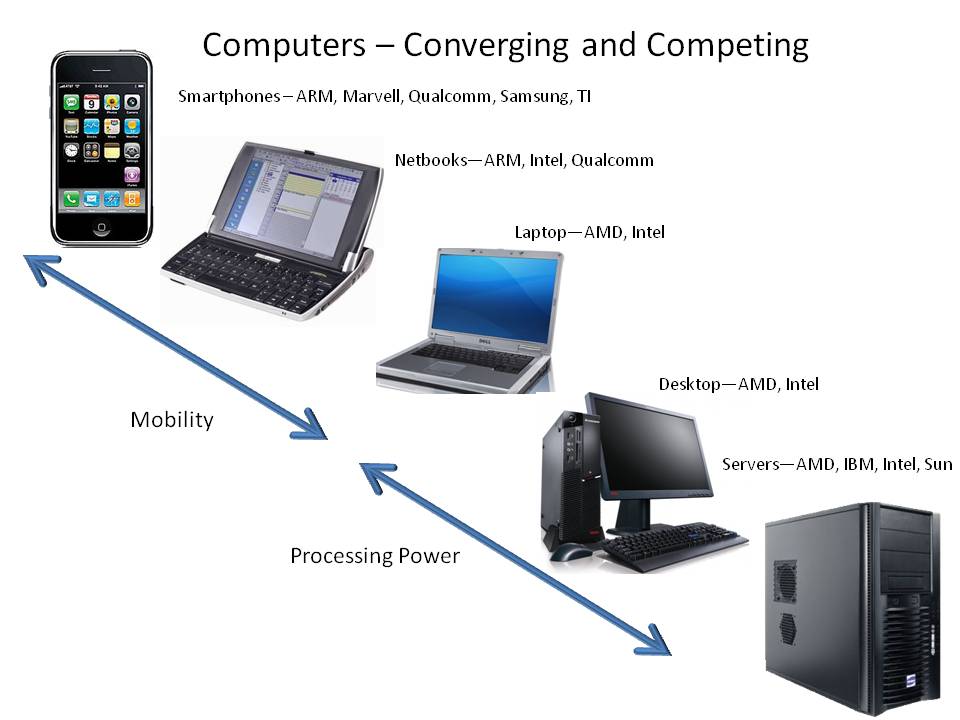 ACT represents the interests of software companies, but today we’ve released a new paper trumpeting the virtues of hardware.
ACT represents the interests of software companies, but today we’ve released a new paper trumpeting the virtues of hardware.
We highlight how software developers and computer chip makers increasingly depend on one another for better products. This symbiotic hardware/software relationship is crucial for the sort of exponential innovation we’ve grown accustomed to in the IT industry. And it is something ACT recently highlighted in a letter to the FTC signed by 37 software developers.
The old days of understanding computer processors and its effect on software was easy. Chips increased in clock speed (first in MHz, then in GHz) and this made software run faster. This worked well for years, but then it became apparent that high clock speed processors often ran idle because other system components couldn’t keep up. These processors also ran very hot, consuming lots of power and creating heat problems.
Today’s chips take a different approach. Chips now have processors with multiple cores (or CPUs) to separately but simultaneously handle independent tasks. In a survey of ACT members that we conducted for the paper, 58% of the respondents identified multicore technology as the processor advancement that has most improved their software products. One member said “multicore makes programming harder, but when my apps leverage it, they can do more.”
But how do programmers know what to do so they can better leverage processor designs such as multicore? Every major chip manufacturer worth a grain of sand has established support programs and created tools for the developer community. Sun has its Sun Developer Network, Intel has a Software Partner Program (and just announced a new software development kit (SDK) for its mobile Atom processor), and AMD has the CodeAnalyst Performance Analyzer to analyze software performance and help developers optimize applications.
In some ways it seems like chip manufacturers are sucking up to software developers. We like this attention–after all, without software, silicon is just sand! Chip makers depend on software programmers to maximize new hardware features. For the development of Windows 7, Microsoft and Intel worked together to optimize the OS for multicore. Windows 7 divides tasks like video encoding over multiple cores and threads to run apps more quickly, and kernal changes improve power management. For example, DVD playback on a battery-powered Windows 7 laptop is 16 watts, compared to 20 watts on Windows Vista.
 It’s not just the operating system that takes advantage of new processors. Software for gaming, HD video and video editing, cloud computing, database apps, mobile apps–it’s enough to make my head spin. Just compare the drastic differences in levels of detail in Pac-man, which was introduced in 1980, with Uncharted 2 (the image to the right), which won the E3 2009 Video Games award for best graphics (it’s cool stuff…see the game trailer here).
It’s not just the operating system that takes advantage of new processors. Software for gaming, HD video and video editing, cloud computing, database apps, mobile apps–it’s enough to make my head spin. Just compare the drastic differences in levels of detail in Pac-man, which was introduced in 1980, with Uncharted 2 (the image to the right), which won the E3 2009 Video Games award for best graphics (it’s cool stuff…see the game trailer here).
But my head is spinning even more with the thought that antitrust regulators are on the prowl. Intel is under the gun in the European Union and here in the U.S. I’m still trying to figure out…why? From 2000 to 2008, processor performance increased 28 times while prices fell by 50%. And according to the Department of Labor statistics, the quality-adjusted price of CPUs has declined more than any of the 1,200 products it has tracked (including software, storage devices, PCs). The real cost of processing power has dropped roughly 40% annually over the past 10 years.
 The reason for increased power and decreased prices? AMD, IBM, Intel, Sun, Texas Instruments (among others) annually invest billions of dollars for R&D. And I’d expect this to be the case for a long time in the future, because competition is becoming fierce and is converging as smartphones become more PC-like and computers become more mobile. So watch out AMD and Intel…here comes ARM, Marvell, Qualcomm, Samsung and TI.
The reason for increased power and decreased prices? AMD, IBM, Intel, Sun, Texas Instruments (among others) annually invest billions of dollars for R&D. And I’d expect this to be the case for a long time in the future, because competition is becoming fierce and is converging as smartphones become more PC-like and computers become more mobile. So watch out AMD and Intel…here comes ARM, Marvell, Qualcomm, Samsung and TI.
Innovation, R&D spending, increased competitive outlook…the processor market has all the hallmarks of a market working for consumers. Regulatory action is the wild-card here–let’s hope it doesn’t trump the benefits of the current ecosystem.

 The Technology Liberation Front is the tech policy blog dedicated to keeping politicians' hands off the 'net and everything else related to technology.
The Technology Liberation Front is the tech policy blog dedicated to keeping politicians' hands off the 'net and everything else related to technology.